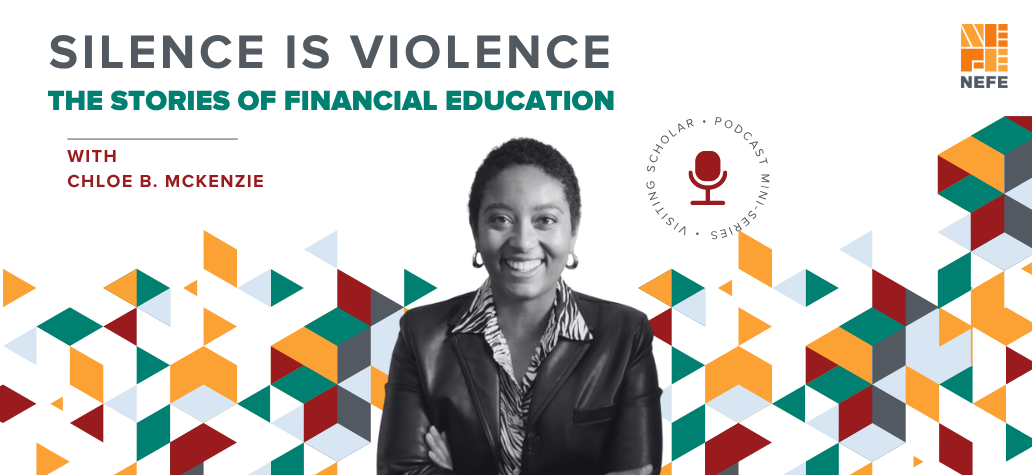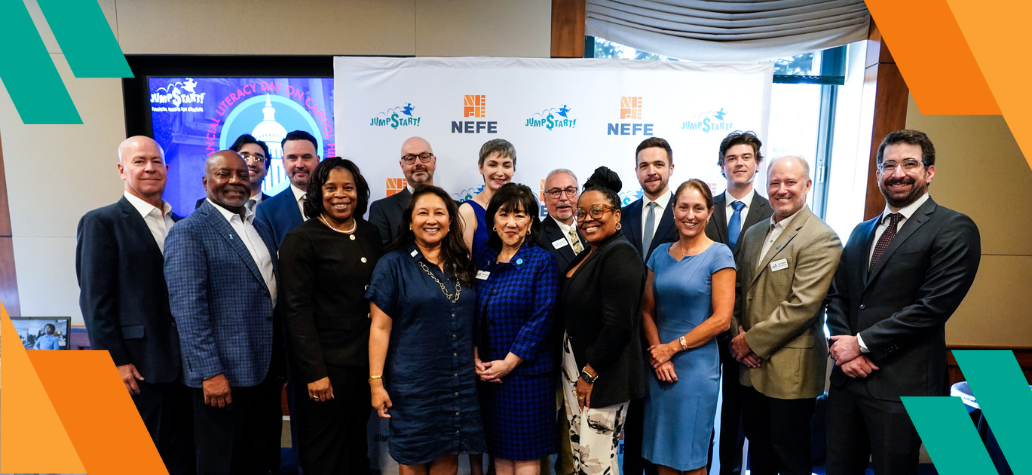New Data Highlights Demand During Financial Capability Month
A new poll from the National Endowment for Financial Education® (NEFE®) on the topic of course offering requirements and opportunities to learn about financial education in high school, identifies what adults wish they had access to when they were students and what they believe is important for existing students. The poll’s theme corresponds with Financial Capability Month (also known as Financial Literacy Month), held each April to promote the need for all Americans to have access to effective financial education.
“It is appropriate that these data are being released during Financial Capability Month (Financial Literacy Month), an initiative that NEFE helped establish nearly 30 years ago. Financial education unequivocally is the foundation for acquiring and applying knowledge, though we are transparent that education alone is not enough to overcome systemic barriers. There are many foundational factors that are part of the Personal Finance Ecosystem that work together toward achieving financial capability,” says Billy Hensley, Ph.D., president and CEO of NEFE. “Americans overwhelmingly recognize the importance of learning money skills at an early age and this poll reinforces there is demonstrated national support for personal finance to be a part of learning in all schools.”
In March, NEFE and AmeriSpeak surveyed U.S. adults on high school financial education graduation requirements and which key topics should be taught in schools. High-level results from this polling include:
- 88% said their state should require a semester- or year-long financial education course for graduation.
- 80% said they wish they were required to take a semester- or year-long financial education course during high school.
- 75% said that spending and budgeting is the most important financial education topic to teach for personal finance education, followed by managing credit (55%), saving (49%) and earning income (47 %).*
A demographic breakdown of the data includes these highlights:
- The older cohorts (ages 45–59 and ages 60+) were significantly more likely than the youngest aged cohort (ages 18-29) to say their state should mandate financial education for high school graduation (18-29 y/o: 79%; 45-59 y/o: 93%; 60+ y/o: 92%).
- Adults with a postsecondary degree were significantly more likely to say their state should mandate financial education than adults with no high school diploma (91% vs. 71%).
- Men and women were similarly likely to indicate that their state should mandate financial education and wished they were required to complete a semester- or year-long course focused on personal finance education during high school.
- Adults with a household income under $30,000 (73%) were less likely than the highest earning income groups (84% to 85%) to say they wished they were required to complete a semester- or year-long course focused on personal finance education during high school.**
- Non-Hispanic Whites (84%) were more likely than non-Hispanic Blacks (73%) and Hispanic (73%) adults to say they wished they were required to complete a semester- or year-long course focused on personal finance education during high school.
- Male adults were more likely than female adults to rank investing (38% vs. 27%) and managing risk (15% vs. 9%) as important topic areas to learn as part of a financial education curriculum.
These poll results highlight the public's support of knowledge influencers, as highlighted in NEFE’s Personal Finance Ecosystem, and the importance of understanding the nuance across foundational factors such as culture and socioeconomic differences. The newest version of the Personal Finance Ecosystem is one of the first projects announced by the NEFE Institute, an arm of NEFE that advances high-impact, scholarly research and facilitates collaboration with practitioners, advocates and policymakers.
For a more detailed account of the overall results and demographic differences of this poll, see the full summary report. Read more information on NEFE consumer polls.
Survey Methodology
This survey was conducted March 17-21, 2022, on behalf of NEFE, using the AmeriSpeak Omnibus Panel. The nationally representative sample included 1,030 adults age 18 and older. Funded and operated by the National Opinion Research Center (NORC) at the University of Chicago, AmeriSpeak® is a probability-based panel designed to be representative of the U.S. household population. Randomly selected U.S. households are sampled using area probability and address-based sampling, with a known, non-zero probability of selection from the NORC National Sample Frame. These sampled households are then contacted by U.S. mail, telephone, and field interviewers (face to face). The panel provides sample coverage of approximately 97% of the U.S. household population. Those excluded from the sample include people with P.O. Box only addresses, some addresses not listed in the U.S. Postal Service Delivery Sequence File, and some newly constructed dwellings. While most AmeriSpeak households participate in surveys by web, non-internet households can participate in AmeriSpeak surveys by telephone. Households without conventional internet access but having web access via smartphones are allowed to participate in AmeriSpeak surveys by web. AmeriSpeak panelists participate in NORC studies or studies conducted by NORC on behalf of governmental agencies, academic researchers, and media and commercial organizations.
For more information, email [email protected] or visit AmeriSpeak.norc.org.
Footnotes:
* Respondents selected up to three response options. The options provided in the survey were “Earning income (ex: income types, careers, postsecondary credentials, income taxes),” “Spending and budgeting,” “Saving (ex: savings account options and features),” “Investing (ex: investment types, investment risks, returns, diversification),” “Managing Credit (ex: interest rates, types of credit, credit reports)”, and “Managing risk (ex: insurance, identity theft, transferring risk).”
** The highest earning income groups include those earning between $60,000 to less than $100,000 and those earning $100,000 or more.



